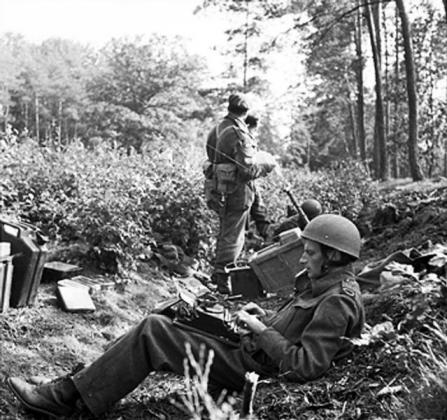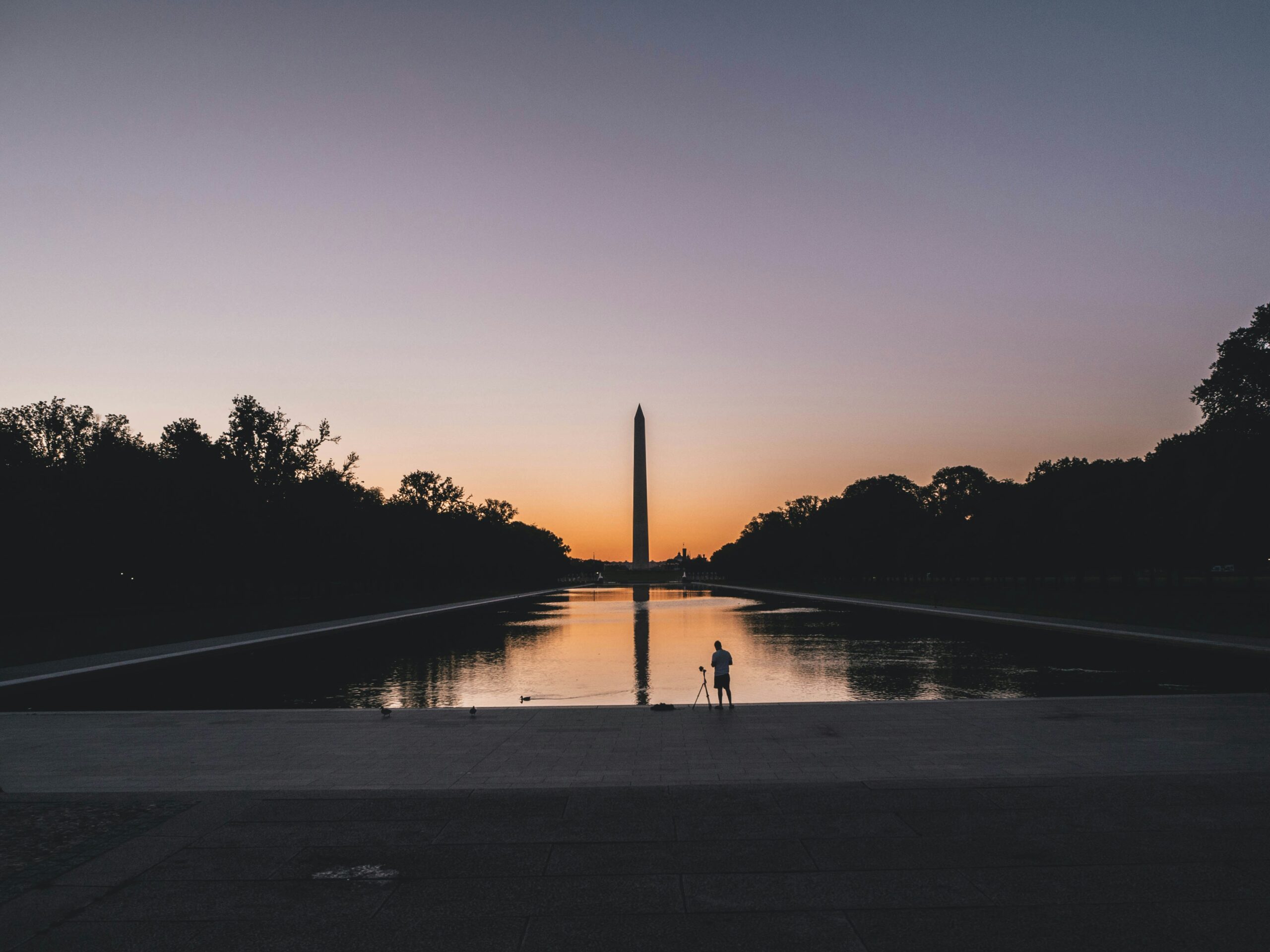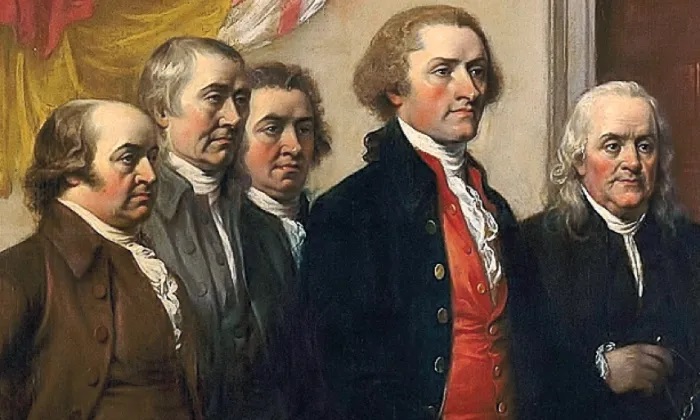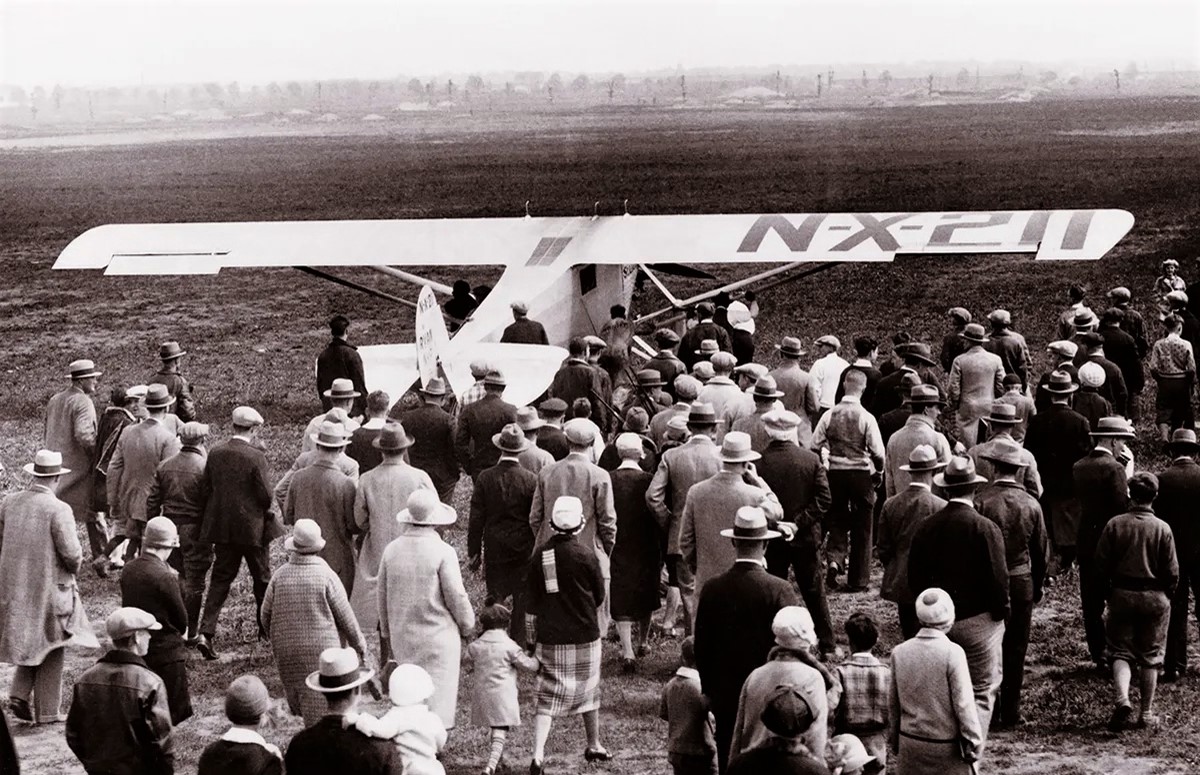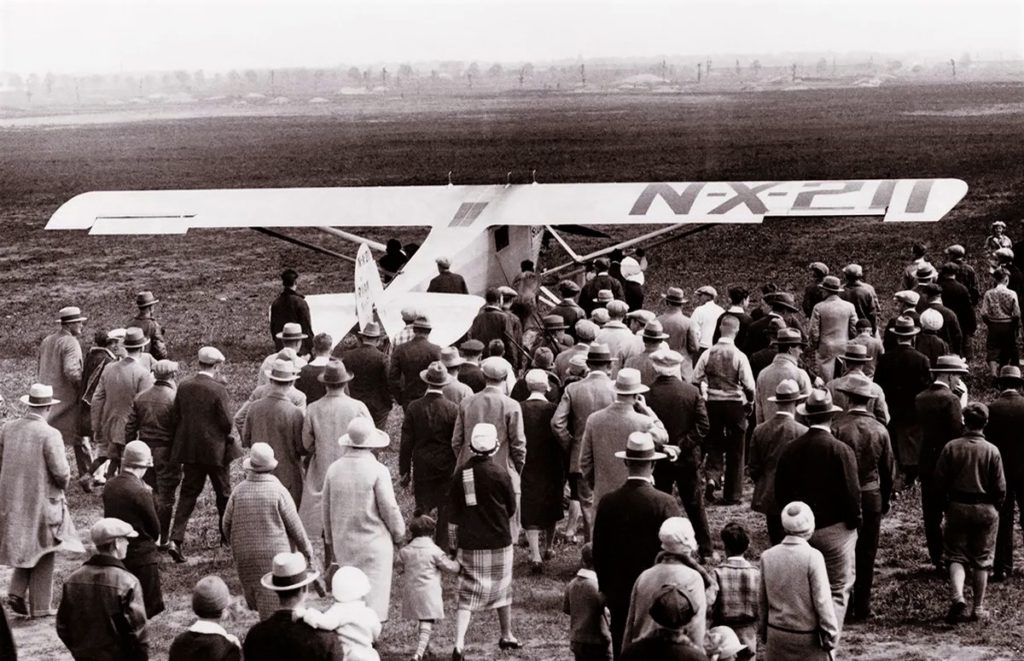
His instruments were prehistoric by today’s standards. His seat was a lightweight, stiff, wicker chair with a thin cushion. He took four sandwiches on the trip: two ham, two roast beef.
He flew without radio equipment or safety equipment in exchange for gasoline. At the time of his take-off, the small monoplane driven by a single 200-horse-powered Wright whirlwind engine carried 448 gallons of gas and 28 gallons of oil. The gas was distributed from wing tanks and a tank in front of the cockpit so large that it required a periscope to look straight ahead.
In all, 5,150 pounds lifted into the air from Roosevelt Flying Field in New York on a rain-soaked airstrip on May 20, 1927 barely clearing the telephone and telegraph lines at the end of the runway. The purpose of the flight was to prove the viability of commercial flight.
The name on Charles Lindbergh’s small plane was the Spirit of St. Louis, but it could’ve been called the Spirit of America. In fact, the name — chosen by the backers of Lindbergh’s flight — had become so fixed in American culture at the time that a child’s replica pedal car had the words the Spirit of America emblazoned on its side.
Thirty-three hours and thirty minutes later, the 25-year-old mail pilot landed in Le Bourget field in Paris. More than 150,000 Parisians broke through barriers to get to the plane and touch the pilot who had accomplished what no other had done. In the commotion, his leather flight helmet was ripped from his hands, souvenir hunters used knives to remove patches of the silver canvas that covered his plane. Lindbergh was overwhelmed.
To this day, his flight remains a singular achievement in American aviation history. So vital to that history that the Spirit of St. Louis hangs from the ceiling – looking much like it did in flight – just inside the front doors of the Air and Space Museum in Washington, D.C.
There were other American triumphs of course but a new age had begun when Lindbergh crossed the Atlantic.
We need to know more about our past, more about the people who were responsible for America’s greatest achievements despite incredible obstacles. But those accomplishments took second to the legislative achievements that issued forth from the United States Congress: the end of slavery; the end of child labor; the Homestead Act, the G.I. Bill, the Civil Rights Act, the Age Discrimination Act, Americans with Disabilities Act.
“All totaled,” The Brookings Institute noted, “Congress passed more than 500 major laws between 1944 and 1999 to improve the quality of life in the nation and world. Judged not as individual programs but as part of larger endeavors, these statutes speak to the enormous range of federal engagement since World War II.”
We need to remember these achievements to recognize not only what we have accomplished but what we are capable of accomplishing. We also need to remember times of darkness and division epitomized by the Civil War, and how we overcame those differences: The Emancipation Proclamation; Women’s Suffrage; The Voting Rights Act; the Great Compromise of 1787 – “which defined the composition of the U.S. Congress by the number of representatives each state would have in Congress under the U.S. Constitution.”
America also produced great leaders: Washington, Lincoln, John Quincy Adams, Henry Clay, John C. Calhoun, Daniel Webster. And those we should learn more about. George Norris, Edmund G. Ross and Philip Hart are just three.
“Senator Albert Beveridge of Indiana,” John Kennedy wrote in Profiles in Courage, whose friends “pleaded with to soft-pedal his charges against the Payne-Aldrich Tariff Act promoted by his party in his campaign for re-election in 1910, but he would not keep silent. ‘A party can live only by growing,’ he said. ‘Intolerance of ideas brings its death.’ ”
Where is that plea for tolerance today?
Concludes Wednesday
Comments


